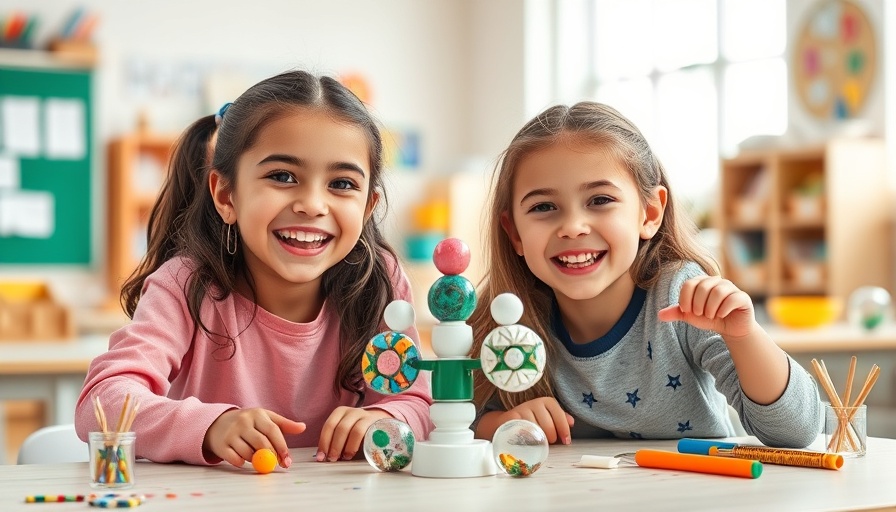
Discovering Mindful Marble Art: A Creative Sensory Experience for Kids
In the bustling pace of modern life, it's easy to forget the joy of simply being present. For health-conscious adults, particularly those living in vibrant cities like Atlanta, incorporating mindful activities into family time can not only enrich relationships but also nurture emotional well-being. One fantastic way to do this is through mindful marble art—a playful and engaging sensory practice ideal for children. This activity demonstrates how creativity and mindfulness can intersect, leading to rich moments of presence and joy.
Why Mindful Marble Art Matters
Mindful marble art is not just an arts-and-crafts session; it is a holistic approach to learning and emotional regulation for kids. As children engage in this colorful activity, they don’t just create art; they cultivate patience, focus, and self-expression. Utilizing the senses through the rolling of marbles, the mixing of vibrant colors, and the focused movements become exercises in mindfulness. Each action fosters a deepening awareness of the present moment, paving the way for emotional growth and creativity.
The Benefits of Engaging in the Arts
Activities like mindful marble art provide children with multiple benefits:
- Encourages Patience: Children learn to slow down and guide their movements, cultivating patience as marbles glide across paper.
- Deepens Connection to the Present: The sensory aspect of rolling marbles evokes attention to the present, enhancing their mindfulness practice.
- Strengthens the Mind-Body Connection: Pairing breath with movement (like tilting the tray) reinforces self-regulation and body awareness.
- Fosters Creativity and Self-Expression: This open-ended exploration encourages kids to express themselves freely, leading to unique artistic creations that reflect their emotions.
Making the Most of Mindful Marble Art: A Step-by-Step Guide
Ready to create your own mindful marble masterpiece? Here’s how you can facilitate this enriching activity at home:
- Set the Space: Create a calm atmosphere with minimal distractions. Gather your materials—such as a shallow tray, non-toxic paint, and marbles—within easy reach.
- Sensory Preparation: Before diving in, invite your child to explore the marbles and paint. Encourage them to describe the sensations they feel—both from the marbles and the paint: Is it slippery or sticky? What colors do they see?
- Rolling with Awareness: As you begin painting, guide your child to be mindful of their movements. Encourage them to take deep breaths as they tilt the tray, observing how the marbles move and colors blend.
- Reflect and Appreciate: Upon completion, take a moment to admire the art together. Ask questions like, “What patterns do you see?” This provides an opportunity to express gratitude for the creative time spent together.
Connecting with Your Child Through Mindful Moments
This artistic approach is not only about the final product, but the process itself. Engaging in mindful marble art fosters emotional connections and opens lines of communication. What might start as a simple crafting session can transform into deeper conversations about feelings, challenges, or triumphs. It encourages shared experiences that build trust and empathy between you and your child.
Creating a Mindfulness Routine with Your Family
Incorporating mindfulness practices at home can lead to long-lasting benefits. Whether it's through mindful marble art, yoga, or daily breathing exercises, having a routine promotes calmness and emotional intelligence in kids. Consider making mindful art a weekly affair, perhaps themed around seasons or personal milestones, to keep it fresh and engaging.
As parents in metro Atlanta prioritize mental health and emotional well-being for their families, remember that creativity and mindfulness can go hand in hand. By engaging in mindful art practices, you equip your children with essential life skills while strengthening your family bond.
Take Action: Why not bring the joy of mindful marble art into your home today? Gather your materials and create a sensory-rich experience with your children. Not only will you cultivate creativity, but you’ll also build precious family connections that last a lifetime!
 Add Row
Add Row  Add
Add 




Write A Comment